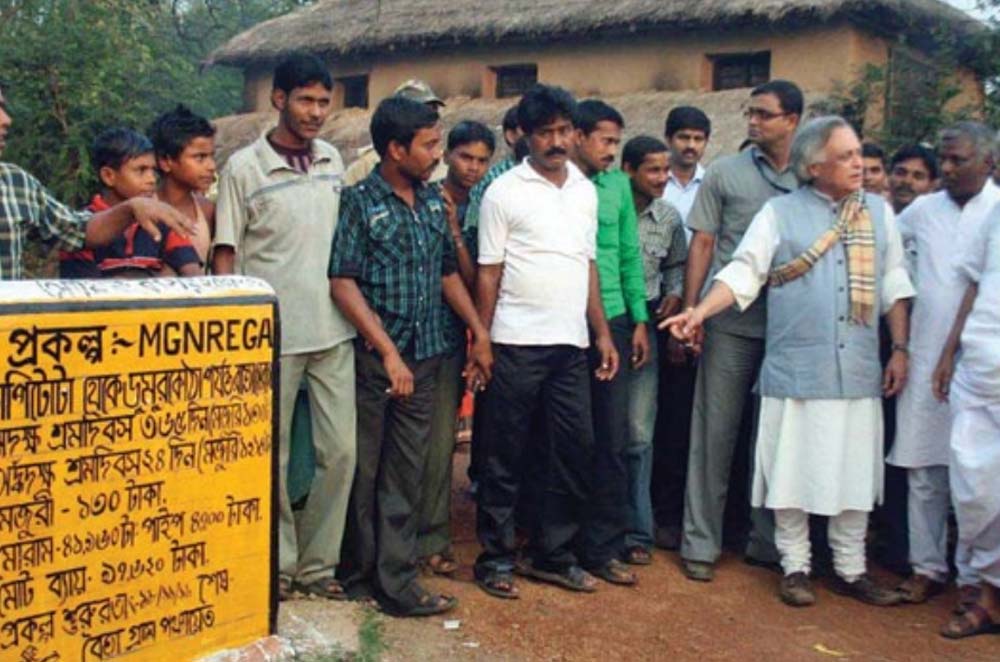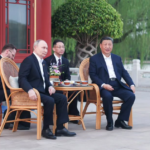LOCAL participatory development is a strategy that is being deployed by governments in developing countries to achieve a variety of socio-economic goals. These include sharpening of poverty targeting, improving service delivery, expanding livelihood opportunities and strengthening the demand for effective governance. Without doubt, an engaged citizenry involved in achieving these goals, especially in rural hinterlands, could hold the government more accountable.
According to the World Bank, there are two major modalities for inducing local participation—community development and decentralisation. While the former supports the efforts to bring villages, neighbourhoods or household groupings in the process of managing resources without relying on formally constituted local governments, the latter refers to efforts to strengthen village and municipal governments on both the demand and supply sides.
However, what is critical for effective as well as inclusive governance is a public-private partnership, wherein the ‘demand side’ enables citizen participation through access to information. Further, that it fosters mechanisms for deliberative decision -making at the grassroots.

In the above context, India’s 12th Five Year Plan (2012-17) envisages strengthening of State-non-governmental organisation (NGO) partnerships to scale up approaches that are innovative, both in terms of programme content and strategy. Innovations could focus on technology, social mobilisation, local institutional building, architecture of partnership, management techniques, and so on. Imagine the possibilities of generating synergies for both dialogic empowerment and programme implementation in rural areas, with over 2,60,000 gram panchayats, in unison with over two million NGOs in the fray!
The proposed setting up of the Bharat Rural Livelihoods Foundation (BRLF) as a dedicated institution to facilitate such partnerships at the grassroots is thus a step in the right direction. Each project (whether for link roads, market yards, electrification, school buildings, health sub-centres, drinking water facilities, and the like) facilitated by BRLF will attempt to leverage the vast resources being made available by the Central Government to the gram panchayats for flagship/special area programmes on food security, rural employment guarantee, livelihood security, health, education, sanitation, power, rural housing, and so on.
The proposed setting up of the Bharat Rural Livelihoods Foundation (BRLF) as a dedicated institution to facilitate State-NGO partnerships at the grassroots is a step in the right direction
BEFORE outlining the challenges for such a partnership in India’s diverse agro-climatic and regional equity context, it is pertinent to highlight a few examples of innovative interventions by dedicated NGOs in the rural-urban continuum. Myrada (Mysore Resettlement and Development Agency), that is currently managing 18 projects in 20 backward districts, aims at securing the rights of women and children to develop livelihood strategies leading to food security and sustained incomes. It is using community radio as a major development communication tool for community empowerment and behavioural change in its projects.
On the other hand, CINI’s (Child In Need Institute) nutrition projects focus on the issue that the problem of malnutrition is not a straightforward case of lack of food. Many families, who have a limited amount of food, do not always share it equally. Mothers and infants, therein, are the worst sufferers. Thus, CINI educates pregnant and lactating mothers through local health workers. In addition, it also runs Nutrition Rehabilitation Centres for severely malnourished children, where balanced food is provided in small but frequent amounts to increase a child’s weight safely over a period of several weeks.
Pratham provides education to children in the slums of Mumbai city. Effective monitoring and evaluation is integral to Pratham’s endeavours in child education programmes. Given the large expanse of their programmes and the sheer number of people involved, it ensures that the grassroots impact can be measured. This enables them to make changes in their strategy and models to increase scheme/project efficacy. For instance, ASER (meaning impact) is the largest household survey of the organisation that measures enrolment as well as reading and arithmetic levels of children between the age group of 4-16 years.
The diversity and quality of social mobilisation skills through which dedicated NGOs like the above make an impact at the last mile is undisputed. The first big challenge, therefore, to strengthen their partnership with gram panchayats (more than two lakh, comprising approximately six lakh villages) is capacity enhancement of approximately 30 lakh elected representatives and related official functionaries at the grassroots every year.
To make this possible, the Rashtriya Gram Swaraj Yojana (RGSY) and the Backward Regions Grant Fund (BRGF) of the Ministry of Panchayati Raj should be efficiently used to strengthen the training needs of these target groups while plugging crucial gaps in local infrastructure (of connectivity, both digital and physical).
In addition, what is also needed to be pushed and scaled aggressively is ‘activity mapping’ and the consequent provision of the backbone 3Fs (funds, functionaries and functions) to gram panchayats by the provincial governments through legislation (activity maps prepared by Kerala could be a good reference point).
Simultaneously, a supplementary impetus needs to be given to the Mission Mode Project of e-Panchayats through broadband, that can enable gram panchayats to electronically track flagship/area programme funds, improve internal management processes and, in fact, supervise converged flow of funds efficiently.
What is critical for effective as well as inclusive governance is a public private partnership, wherein the ‘demand side’ enables citizen participation through access to information
A good example of the State-NGO partnership is the use of ‘Cluster Facilitation Teams’ under the flagship programme, MGNREGA (Mahatma Gandhi National Rural Employment Guarantee Act). These teams are to address, on priority, the locally relevant needs of community blocks of dense populations with landless agricultural labourers, Scheduled Castes, Scheduled Tribes and other vulnerable groups. They also serve clusters of gram panchayats to fill the gap assessed on account of non-availability of requisite expertise in land development activities at the local level (Tamil Naidu and Kerala have successfully benefited from such a partnership).
In fact, intensive intervention, during the next five years, in such community blocks needs to focus on convergence with NGO-supported Self Help Groups (SHGs). Such groups are being nurtured through the livelihood collective approach under the National Rural Livelihood Mission (NRLM).
This partnership could be extremely useful in disseminating relevant information through innovative social mobilisation strategies by NGOs on, for example, entitlements under the MGNREGA scheme to vulnerable groups, especially rural women.
The state-NGO partnership faces a major challenge from intra-State inequalities in the specially designated rural local governance structures of the mountainous North-Eastern States as well as the ‘Schedule Five Areas’ of nine backward States in the heart of the country, including Madhya Pradesh, Chhattisgarh, Jharkhand and Odisha (with areas affected by left-wing extremism). Besides, the partnership would be put to test by the socio-economic backwardness of individual districts (for instance, Mahendragarh and Mewat in Haryana), several of which are located in States that are doing well economically.
Sustained priority to grassroots institutional arrangements that lead to outcomes and impacts in social development through the State-NGO partnership is a must.
The writer is an IAS officer and currently a Senior Fellow at South Asia Studies, SAIS, Johns Hopkins University, Washington, DC. The views expressed are personal.



























































